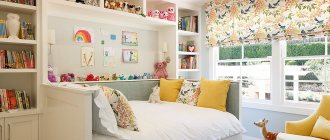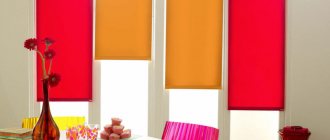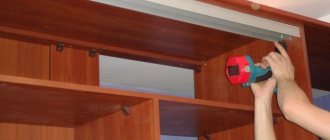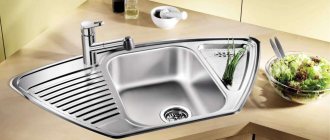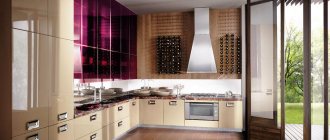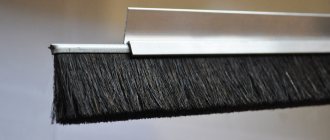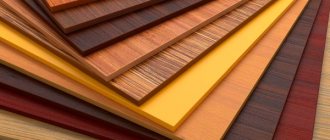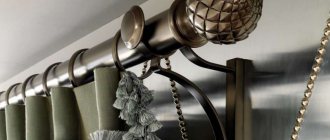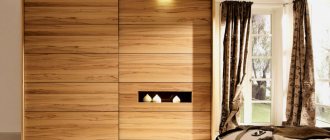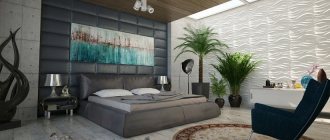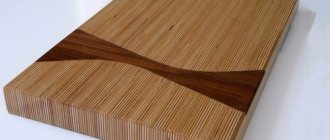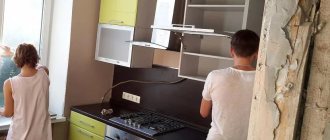Doors
Cabinet sliding wardrobes are equipped with sliding sliding panels in the front part. Such designs are convenient in small rooms to save space. Owners of modern spacious apartments prefer to build wardrobes along the entire wall. In this case, a continuous facade of a large area is formed.
A free-standing wardrobe or china cabinet is equipped with hinged doors. The part is intended to protect the internal contents and for decorative purposes. Door fasteners are selected depending on the type: hinged hinges or roller guides.
Accessories
Furniture fittings are all kinds of fasteners, handles, curtains, supports and decorative elements. They are made of metal, wood, plastic and other materials. Metal products are treated with special anti-corrosion agents to extend their service life. For luxury-class designs, the fittings can be gold-plated or silver-plated, as well as trimmed with rhinestones, crystal or natural stones. Conventionally, fittings can be classified by type.
Connecting fittings – connects and fixes parts together. This group includes one-piece, detachable and movable elements:
- Permanent connections include screws, ties, screws, nails, bolts, brackets, hooks, upholstery buttons of upholstered furniture. The tie can be eccentric or connecting. Galvanized steel is used for the eccentric tie and makes it durable. The corner tie does not require additional holes in the ends of the furniture. Threaded ties include a nut and a screw that create a strong connection. A wedge coupler is also used for quick connection. It is based on plates, wedges and staples. The ties are connected with traditional screws;
- Detachable connections ─ these are door handles, latches, shelf holders, magnetic devices, locks, bolts. To fasten detachable structures, screws and self-tapping screws are used;
- Movable ─ these are hinges, “rails” for parallel movement of the door, microlifts. Pneumatic mechanisms and ball-bearing guides take on the entire load.
For furniture made from chipboards, it is not recommended to use piano hinges, which were used several decades ago. Today, manufacturers use four-joint designs called "frog". They can withstand a 10,000th door opening/closing cycle.
Detachable
Movable
One-piece
Rotating elements ─ these include carousel mechanisms, structures for moving tabletops apart, for directing the movement of products. For example, the shelf rotates along its axis and makes it easy to get the desired item. Basically, furniture structures are built using guide systems, which are used to pull out elements. They can extend fully or partially. Thanks to special rollers, such systems operate smoothly and almost silently. They are made of steel, fluoroplastic or duralumin. If we consider the importance of fittings as a percentage of the cost of cabinet, upholstered and kitchen furniture, we get the following results: in cabinet furniture, fittings account for 10-15% of the total cost of the product. For a kitchen, the importance of fittings is 25% of the cost of the set, and for upholstered furniture it is 30-40% of the cost of the product.
Rotary
Accessories for assembly ─ when purchasing furniture, you need to pay attention to the accessories and upholstery fabric, determine their quality and strength. And also on the assembly details of the product, which include furniture corners, confirmants, rafixes, minifixes and dowels:
- Furniture corners are simple, cheap and affordable types of connections. On the construction market they are presented in different sizes, made of plastic and metal. Corners are designed for fastening hinged parts in pencil cases and cabinets. They are easy to install, have a low price, but are noticeable, which slightly spoils the design of the structure;
- Confirmat is a furniture European screw, which received its name from the German manufacturer. A furniture screw tie, consisting of a steel rod with a blunt ring, a head and a massive thread, is capable of connecting several wooden elements at once. The confirmation is visible in the design, so it is masked with a plug. The most common are screws with dimensions of 7x50 mm or 6.3x50 mm;
- A dowel is a connecting element that is used for assembling wooden, plywood, and chipboard furniture parts. It is made of hardwood and has a cylindrical shape with chamfers. Today plastic dowels are also produced. They strengthen furniture connections with confirmat, minifix and rafix. Used with PVA glue as an independent fastening element;
- Minifix ─ is an eccentric coupler for furniture joints, consisting of two parts ─ a rod and an eccentric. Minifix has a different design, which makes it possible to increase the length of the element and connect it at different angles. For installation, use a Ø15 mm cutter and drills, with which three holes are drilled. The fastening turns out to be complex and requires precise calculation;
- Rafix ─ is used in visible places to connect furniture parts of tabletops, side parts of furniture structures. It is installed on two holes, has an eccentric mechanism and a rod. Rafix has a beautiful aesthetic appearance, but it is not particularly durable.
Dowel
Rafix
Minifix
Furniture corners
Minifix
Facade
As a rule, wardrobe doors form the entire façade of the furniture. Other design solutions for the facade also include:
- fragments of decorative glazing;
- edges of open shelves;
- sheflots (front parts of drawers);
- decorative overlays (horizontal and vertical);
- cornices.
The concept of “façade” includes all visible elements extending into the side or frontal plane. The material, color and texture of the facade sets the style of the interior. It is possible to make sliding wardrobes from ready-made facades, which are sold in a wide range.
The advantages of making furniture yourself
Making furniture yourself has its advantages, so you shouldn’t immediately give up the opportunity to create furnishings taking into account personal preferences and interior features. If you lack experience, you can start with simple things - a cabinet, a cabinet, a table, a stool.
The main advantages of making furniture yourself include the following:
- The first and main advantage is the ability to manufacture furnishings according to individual sketches, when there are no restrictions or frames.
- Personal execution is personal control of the quality of execution of each stage (selection of material, its processing, assembly). The result is a high quality product.
- When choosing materials and fittings, when making furniture yourself, the emphasis is not on reducing the cost, but on quality and durability.
- There are no restrictions on the number of items made in the same style - this allows you to create an organic atmosphere in the interior of all rooms of a house or apartment, rather than looking for suitable items in different stores.
- Making furniture is a creative process that allows you to escape from current worries, get a lot of positive impressions and pleasure from time spent usefully.
- Even when purchasing high-quality materials and fittings, we can talk about preserving the family budget, since furniture made with your own hands will last for decades.
If you make it yourself, you can decorate the facades as you wish.
Note! Over time, after gaining experience, a hobby can become a good source of additional or even main income.
Nuances that need to be taken into account when making furniture yourself
Making furniture yourself involves some nuances that you need to know about in advance. It is advisable to have minimal skill in working with tools and to know about the properties of the material that will be used to make furniture.
Solid wood furniture for baths
You will need to consider the following:
- The cost of raw materials indicates its quality. Therefore, as a furniture material for a dacha, you can choose cheaper raw materials than for an apartment. Operating conditions will also have to be taken into account.
- The work of making furniture requires physical strength, especially when working with solid wood.
- You should not expect that it will take little time to manufacture the product. On the contrary, especially with a lack of experience, a high-quality result of your work can be obtained after a few days, or even weeks.
Solid wood dining group
Note! In the process of manufacturing parts, you will have to work on machines and use power tools. It is important to follow safety precautions and use personal protective equipment.
Name of parts
1. The upper horizon is the topmost part in wall cabinets, located horizontally, at right angles to the sides. It differs from a shelf in that it is always located at the top of the module when the shelf is inside.
2. The lower horizon is the lowest part in wall cabinets, located horizontally, at right angles to the sidewalls. It differs from a shelf in that it is always located at the bottom of the module when the shelf is inside.
3. The sidewall is the outermost side part, located vertically, at right angles to the horizons and shelves.
4. Planks are narrow (minimum width 60 mm) parts located in the upper part of the structure, between the sidewalls. Designed for hidden fastening of lids and table tops.
5. Removable shelves are recessed horizontal parts that are not fixed inside the section.
6. Shelves are rigid recessed parts located horizontally inside the section.
7. The bottom is the lower horizontal part in the design of the cabinet.
8. The base is the lowest recessed part, located horizontally with an edge, under the bottom. Removable is designed to hide the legs. The rigid base acts as a drawer.
9. The drawer is a part located horizontally with an edge under the tabletop or rigid shelf, between the sidewalls. Designed to prevent sagging of the part lying on it.
10. The back wall is the part that covers the cabinet or cabinet from the back. Mainly made of fiberboard or HDF.
12. The facade is the front decorative panel, in other words, the door of a cabinet or cabinet.
13. Sheflot is the front of a drawer
14. A tabletop is the working area of a table or kitchen unit.
Conclusion
Now you know the name of the parts. They serve as building blocks for cabinet furniture. This knowledge is guaranteed to help you when making furniture with your own hands. Correct me in the comments if I missed anything.
If you need detailing of cabinet or built-in furniture, please contact us. We will definitely discuss the terms of cooperation and come to a common opinion. For a moderate percentage of my work, I will prepare a detailed project for you on time.
What would you like to add to this article?
Tell me about your experience in the comments.
I will be very interested to hear your stories!
With good thoughts about you, always in sawdust
Rekun Dmitry.
Don't forget to share this article on social networks
Click here to find out more:
Thank you. It was interesting to expand my horizons.
Didn't they say what a sidewall is?
Hint: The word sidewall comes from the word side. Accordingly, the sidewall is...Ask your child, I’m interested in whether he can guess it or not. And tell me later.
Thanks for the useful information. I found out that the front on the drawer is put on Sheflot.
Live and learn!
Leave a comment Cancel reply
This site uses Akismet to reduce spam. Find out how your comment data is processed.
Tools
To make your own furniture, you will need the following tools.
Tools for sizing and marking
To apply markings and carry out measuring operations, you will need a tape measure, a ruler, a pencil, a construction square, a stationery knife, and an awl.
A circular saw
To cut parts, use an electric jigsaw or circular saw. A hacksaw is not used because it is impossible to get a neat cut with it, and it will take much more time to cut the parts. To reduce the formation of chips when working with a jigsaw, use the cutting method through tape or use a special attachment. Using a circular saw, the cut is neat, and this tool also allows you to make neat rounded corners.
Screwdriver
When assembling furniture, a screwdriver is used to tighten bolts, self-tapping screws, and confirmatories.
Hole for confirmation
To make holes for fasteners, you will need different drills with a diameter of 4.5 to 10 mm - it is advisable to have them on hand.
The hole for the confirmation is drilled with a special drill, and the fastener itself is tightened using a hexagon
There are bits for a screwdriver, but it is not always possible to use the tool in a hard-to-reach place.
Forstner drill
A Forstner drill is used to make holes for hinges and fittings.
Clamps are useful for securing parts when gluing
You will also need a hammer, a hair dryer and clamps.
Name of parts
1. The upper horizon is the topmost part in wall cabinets, located horizontally, at right angles to the sides. It differs from a shelf in that it is always located at the top of the module when the shelf is inside.
2. The lower horizon is the lowest part in wall cabinets, located horizontally, at right angles to the sidewalls. It differs from a shelf in that it is always located at the bottom of the module when the shelf is inside.
3. The sidewall is the outermost side part, located vertically, at right angles to the horizons and shelves.
4. Planks are narrow (minimum width 60 mm) parts located in the upper part of the structure, between the sidewalls. Designed for hidden fastening of lids and table tops.
5. Removable shelves are recessed horizontal parts that are not fixed inside the section.
6. Shelves are rigid recessed parts located horizontally inside the section.
7. The bottom is the lower horizontal part in the design of the cabinet.
8. The base is the lowest recessed part, located horizontally with an edge, under the bottom. Removable is designed to hide the legs. The rigid base acts as a drawer.
9. The drawer is a part located horizontally with an edge under the tabletop or rigid shelf, between the sidewalls. Designed to prevent sagging of the part lying on it.
10. The back wall is the part that covers the cabinet or cabinet from the back. Mainly made of fiberboard or HDF.
12. The facade is the front decorative panel, in other words, the door of a cabinet or cabinet.
13. Sheflot is the front of a drawer
14. A tabletop is the working area of a table or kitchen unit.
Conclusion
Now you know the name of the parts. They serve as building blocks for cabinet furniture. This knowledge is guaranteed to help you when making furniture with your own hands. Correct me in the comments if I missed anything.
If you need detailing of cabinet or built-in furniture, please contact us. We will definitely discuss the terms of cooperation and come to a common opinion. For a moderate percentage of my work, I will prepare a detailed project for you on time.
What would you like to add to this article?
Tell me about your experience in the comments.
I will be very interested to hear your stories!
With good thoughts about you, always in sawdust
Rekun Dmitry.
Don't forget to share this article on social networks
Important step: drawing
To make furniture yourself, you will need to develop a drawing and assembly diagram for the product. This is a must. The basis for the drawing is a sketch - an idea embodied on paper. The sketch reflects the main nuances: the shape of the product, proportions, quantity and presence of basic elements (shelves, doors, drawers), design of the facades.
Children's furniture - drawing with dimensions
As a basis for preparing documentation for furniture manufacturing, you can take a standard list of diagrams and drawings provided by the cabinet furniture manufacturer to facilitate and simplify the assembly process. This list consists of the following documentation:
- General view of the product.
- Assembly drawing.
- List of accessories.
- Drawings with details of all elements, indicating places of fastening of parts, types of holes and fittings used, location of edges.
- Specifications.
Product detailing for assembly
This is an optional list - some items can be deleted, some can be added.
